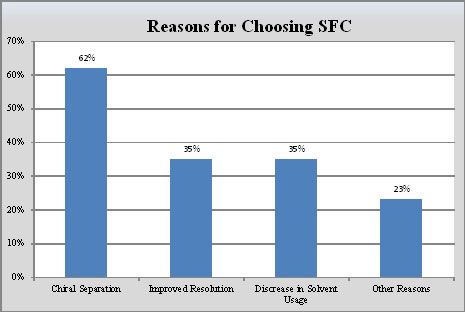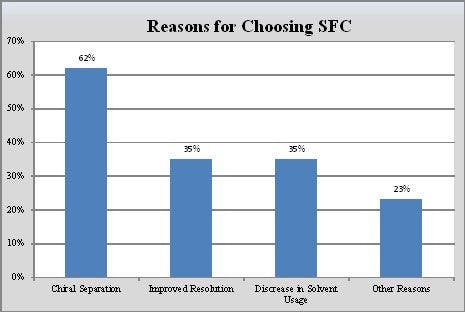Market Profile: Supercritical Fluid Chromatography (SFC)
Supercritical fluid chromatography (SFC) makes use of a supercritical fluid, typically carbon dioxide (CO2), instead of an organic or aqueous solvent, to carry the sample through the chromatography column. The advantages of SFC when using carbon dioxide are that there are no organic solvents to dispose of.
Market Profile: Supercritical fluid chromatography (SFC)
Supercritical fluid chromatography (SFC) makes use of a supercritical fluid, typically carbon dioxide, instead of an organic or aqueous solvent, to carry the sample through the chromatography column. The advantages of SFC when using carbon dioxide are that there are no organic solvents to dispose of. Separations can also be performed more quickly than with high-performance liquid chromatography (HPLC), since the diffusion of solutes in supercritical fluids is about an order of magnitude greater than in liquids.

The nontoxic nature of carbon dioxide as a solvent is a very attractive feature of SFC when working with products intended for human consumption. SFC is also a particularly attractive separation method for chiral compounds because of its efficient use of the chiral stationary phase (CSP) media, and the fact that SFC provides a compatible environment for CSP media. These factors make SFC particularly attractive to the pharmaceutical, agriculture, and food industries.
In 2013, SDi conducted a global survey of knowledgeable liquid chromatography users. This extensive 60-question survey provides a great deal of insight into users’ opinions on various topics relating to their liquid chromatography usage. For SFC in particular, nearly two-thirds of the SFC users chose the technology because of its chiral separation ability. Improved resolution and decrease in solvent usage were also two frequently mentioned benefits of SFC among the survey respondents. In contrast, the top three limitations or drawbacks of SFC as mentioned by the participants were high initial system costs, difficulty in transferring methods, and unproven methods.
The foregoing data were extracted and adapted from SDi’s recently published
Tactical Sales and Marketing (TSM)
report titled
HPLC: End Users Influencing Development for Advanced HPLC Systems, Columns and Chemistry
.
For more information, contact Glenn Cudiamat, VP of Research Services, Strategic Directions International, Inc., 6242 Westchester Parkway, Suite 100, Los Angeles, CA 90045, (310) 641-4982, fax: (310) 641-8851, e-mail:
[email protected]
Regulatory Deadlines and Supply Chain Challenges Take Center Stage in Nitrosamine Discussion
April 10th 2025During an LCGC International peer exchange, Aloka Srinivasan, Mayank Bhanti, and Amber Burch discussed the regulatory deadlines and supply chain challenges that come with nitrosamine analysis.
Top Execs from Agilent, Waters, and Bruker Take the Stage at J.P. Morgan Healthcare Conference
January 16th 2025The 43rd Annual Healthcare J.P. Morgan Healthcare Conference kicked off in San Francisco earlier this week. Here’s what top executives from Agilent, Bruker, and Waters, discussed during the event.


